What hole saw sizes are available?

Hole saws come in a wide range of sizes, typically between 14mm – 210mm (½inch – 8 ¼ inches) in diameter. Some models of hole saw will have their measurements printed on the wall of the cutting blade.
Listed below are a few of the most commonly used hole saw sizes and applications.
Diameters
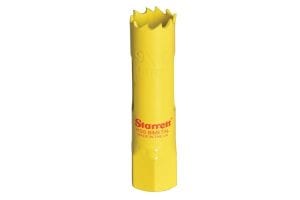
There are 14mm (9/16 inch) hole saw blades available that are typically used for making small holes for domestic pipework.
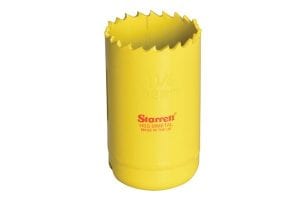
There are 32mm (1 1/5 inches) hole saws that would be ideal for cutting holes for pipes that are an inch in diameter.
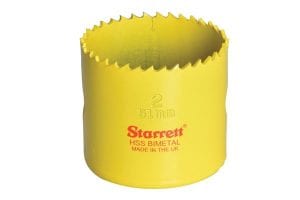
There are 51mm (2 inches) hole saw blades that are often used for making a hole in a desk surface for computer wires and cables to pass through.
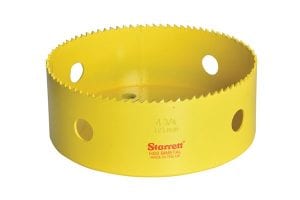
There are 121mm (4 ¾ inches) hole saws available that may be used for larger drainage pipes and light fittings.
The above mentioned hole saws are just some of the many sizes available to purchase, but there are in fact hundreds of different sizes, makes and models from which to choose.
For whatever purpose you need a hole saw for there is more than likely going to be one that meets your needs.
Cutting Depth
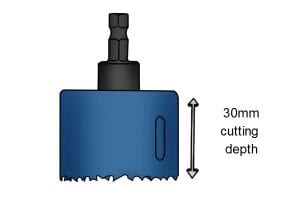
The cutting depth of a hole saw is the maximum depth that any given hole saw can cut to without having to break off the slug or use an arbor extension. A hole saw’s basic cutting depth is limited to the length of its saw blade.
Hole saws can cut to a variety of depths from 22mm to 350mm (7/8 inch to 14 inches), depending on the make and model. You can cut to much deeper levels if you use an arbor extension.
What is an arbor extension?
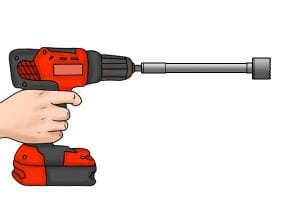
An arbor extension is a long metal rod made from durable tool steel. The rod is typically hexagonally shaped so that it can be held in a power drill’s chuck.
Arbor extensions come in sizes from 140mm – 330mm (5.1/2 inches to 13 inches) in length. The arbor extension has a socket on the end which will accept the hex-shank from your arbor.
With an arbor extension you can reach many times the depth that the hole saw could normally cut to.
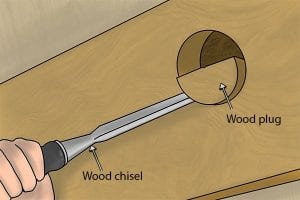
Note: you will have to break off the slug and remove it when cutting deep holes.
As you are not making a hole all the way through your workpiece in one go, then you will have to break off the slug by chiselling out the internal portion of your cut. Once this is done you can continue cutting with your hole saw to your required depth.






